Money money money money, money
Some people got to have it
Some people really need it
Listen to me y’all, do things, do things, do bad things with it
You wanna do things, do things, do things, good things with it
Talk about cash money, money
Talk about cash money – dollar bills, yall
The O’Jays “For The Love of Money”
Commemorative Coins
Authorized by Congressional public law, signed by the sitting President of the United States and produced by the United States Mint, commemorative coins celebrate and honor American people, places, events, and institutions. Each coin is crafted to be rich in symbolic history. They represent not only an investment in maintaining our American Past, but also in ensuring our Future.
These coins help raise money for important causes as well as commemorating important aspects of American history.
Although these coins are legal tender, most are not minted for general circulation. The few exceptions are special coin programs like the State, Territories and America The Beautiful quarters which were specifically produced for circulation.
Twenty seven commemorative coins and two concept coins featuring Black history icons, seminal historic events and institutions have been produced to date. Four Black history icons, one African Woman, two Black slaves, one Black patriot, nine courageous Black children, one Black jazz legend, one piece of groundbreaking Civil Rights legislation and one organization that includes Black girls have been honored on commemorative coins.
Notes:
- Many of the coins in the Museum Of UnCut Funk collection are proofs, which are early samples of coin issues that are traditionally used to check that the dies are correct and for the archival preservation of each issue. Today, proofs are also struck in greater quantities to be purchased by coin collectors.
- Some proof coins with silver mirror surfaces photograph as brown or black due to the way they reflect light.
- Coins are presented in chronological order based on when they were first introduced to the public.
- “Obverse” refers to the front of a coin, medal or medallion and “reverse” refers to the back.
1946 – Booker T. Washington Silver Half Dollar Coin
Commemorates Booker T. Washington, a former slave who became a famous educator, author, orator, advisor to Presidents and founder of the Tuskegee Institute.
Washington was the first free Black person featured on United States currency and on a commemorative silver half dollar coin.
Between 1946 and 1951, eighteen different coins were struck featuring Booker T. Washington.
The obverse design features the bust of Booker T. Washington in the center of the coin and the date on the left. The inscriptions read: “BOOKER T. WASHINGTON”, “UNITED STATES OF AMERICA”, “HALF DOLLAR” and “E PLURIBUS UNUM.”
The reverse design features the New York University Hall of Fame and a slave cabin. The inscriptions read: “BOOKER T. WASHINGTON BIRTHPLACE MEMORIAL,” “LIBERTY,” “FROM SLAVE CABIN TO HALL OF FAME,” “IN GOD WE TRUST” and “FRANKLIN COUNTY VA.”
The coin was designed by Isaac Scott Hathaway, the first Black person to have a design adopted by the United States Mint.
1951 – George Washington Carver / Booker T. Washington Silver Half Dollar Coin
Commemorates George Washington Carver, a former slave who became a famous botanist and inventor. Also commemorates Booker T. Washington.
Carver and Washington were the first free Black men featured on United States currency and only Black people featured on a commemorative silver half dollar coin.
From 1951 to 1954, a dozen coins were struck to honor George Washington Carver and Booker T. Washington together.
The authorizing legislation passed in 1951 called for the melting of all unsold Booker T. Washington Half Dollars and the recoinage into coins bearing conjoined profile portraits of George Washington Carver and Booker T. Washington.
The obverse design features a three quarter profile portrait of Booker T. Washington behind the profile portrait of George Washington Carver. The inscriptions read: “UNITED STATES OF AMERICA,” “IN GOD WE TRUST,” “E PLURIBUS UNUM,” “GEORGE WASHINGTON CARVER,” “LIBERTY,” “BOOKER T. WASHINGTON,” “HALF DOLLAR” and “1952.”
The reverse design features a simple map of the United States of America. The inscriptions read: “FREEDOM AND OPPORTUNITY FOR ALL,” “USA” and “AMERICANISM.”
This coin was also designed by Isaac Scott Hathaway, the first Black person to have a design adopted by the United States Mint.
1992 – Olympic $5.00 Gold Coin
Commemorates the 1992 Olympics games in Barcelona, Spain.
The obverse design features an Olympic sprinter in a burst of speed with the American flag in the background. The inscriptions read: “LIBERTY,” “USA,” “1992,” “IN GOD WE TRUST.”
The reverse design unites two majestic symbols, the Olympic Rings, and the American Bald Eagle.The inscriptions read: “UNITED STATES OF AMERICA,” “USA,” “FIVE DOLLARS.”
1991 – 1995 – World War II 50th Anniversary Half Dollar Coin
Commemorates the 50th anniversary of the U.S. involvement in WWII.
The obverse design features the faces of three U.S. service personnel superimposed upon the “V” for victory symbol at center, beneath a World War II era bomber and five stars above the bomber at the center top. The inscriptions read: “LIBERTY,” “IN GOD WE TRUST,” “1991-1995.”
The reverse design features an American serviceman on the beach of a Pacific Island with a landing craft, a ship, and a fighter plane appears in the background. The inscriptions read: “UNITED STATES OF AMERICA,” “E PLURIBUS UNUM,” “HALF DOLLAR.”
1996 – Atlanta Centennial Olympics Silver Dollar Coin
The obverse design features an athlete doing the Fosbury Flop high jump technique. The inscriptions read: “LIBERTY,” “IN GOD WE TRUST,” “USA,” “1996.”
The reverse features the mark of the Atlanta Committee for the Olympic Games which is positioned to the left of the design, a torch and flame, and the words Atlanta 1996.The inscriptions read: “UNITED STATES OF AMERICA,” “ONE DOLLAR,” “CENTENNIAL OLYMPIC GAMES,” “E PLURIBUS UNUM.”
1997 – Jackie Robinson $5.00 Gold Coin
Commemorates the 50th anniversary of Jackie Robinson breaking the color barrier in major league baseball.
Robinson was the first major league athlete and only Black person specifically honored on a United States gold commemorative coin.
One hundred thousand gold coins were produced at the West Point Mint. A portion of the proceeds from sales of the coins benefited the Jackie Robinson Foundation, which supports educational and leadership programs to encourage, train and motivate minority youth.
The obverse design features Robinson in his later years as a Civil Rights Leader and political activist. The inscriptions read: “JACKIE ROBINSON,” “1997,” “IN GOD WE TRUST” and “LIBERTY.”
The reverse design features a baseball design. The inscriptions read: “UNITED STATES OF AMERICA,” “1919-1972” – years of Robinson’s life,” “Legacy Of Courage,” “E PLURIBUS UNUM” and “FIVE DOLLARS.”
1997 – Jackie Robinson $5.00 Gold Coin Legacy Set
The United States Mint produced a limited edition of 50,000 Jackie Robinson Legacy Sets, featuring the Proof $5.00 Gold Coin and a specially authorized reproduction of the 1952 Topps Jackie Robinson baseball card.
The Topps “Finest” card — the only baseball card to bear the United States Mint seal — is available only in the Legacy Set, with the Proof $5.00 Gold Coin and a full-color limited edition lapel pin made exclusively for the Mint, which duplicates the 50th Anniversary uniform patch worn by all Major League Baseball players for the 1997 season. And as a free bonus, purchasers of the Legacy Set also received the actual patch being worn by major leaguers.
1997 – Jackie Robinson Silver Dollar Coin
Commemorates the 50th anniversary of Jackie Robinson breaking the color barrier in Major League Baseball in 1947.
Robinson was the first major league athlete and first Black person featured on a United States silver dollar commemorative coin.
Two hundred thousand silver dollars were produced at the San Francisco Mint. A portion of the proceeds from sales of the coins benefited the Jackie Robinson Foundation, which supports educational and leadership programs to encourage, train and motivate minority youth.
The obverse design features Robinson stealing home plate, as he did in 1955 World Series between the New York Yankees and the Brooklyn Dodgers. The inscriptions read: “LIBERTY” AND “IN GOD WE TRUST” and “1997.”
The reverse design features the 50th anniversary Jackie Robinson Foundation logo. The inscriptions read: “UNITED STATES OF AMERICA,” “ROOKIE OF THE YEAR 1947,” “HALL OF FAME 1962,”“E PLURIBUS UNUM” and “ONE DOLLAR.”
1998 – Black Revolutionary War Patriots Silver Dollar Coin
Commemorates Black Revolutionary Patriots and the 275th anniversary of the birth of Crispus Attucks, the first patriot killed in the infamous Boston Massacre in 1770. A portion of the proceeds from sales of these coins supports the construction of the Black Patriots Memorial in Washington, D.C.
The obverse design features a portrait of Crispus Attucks. The inscriptions read: “LIBERTY,” “IN GOD WE TRUST,” “CRISPUS ATTUCKS 1723-1770” and “1998.”
The reverse design features a Black patriot family. The inscriptions read: “UNITED STATES OF AMERICA,” “E PLURIBUS UNUM” and “ONE DOLLAR.”
The reverse was designed by Ed Dwight, the second Black person to have a design adopted by the United States Mint
1999 – New Jersey State Quarter
Commemorates General George Washington and members of the Colonial Army crossing the Delaware River to fight the British in Trenton.
The New Jersey State Quarter is the first coin authorized for circulation depicting a Black person.
The New Jersey State Quarter was the third coin in the State Quarter series, introduced in the order of constitution ratification.
The obverse design features a portrait of George Washington. The inscriptions read: “UNITED STATES OF AMERICA,” “LIBERTY,” “IN GOD WE TRUST” and “QUARTER DOLLAR.”
The reverse design features General George Washington and members of the Colonial Army crossing the Delaware River, including a Black slave among the patriots helping to row the boat, symbolizing Black patriots who fought in the Revolutionary war. The design was based on 1851 “Washington Crossing the Delaware” painting by Emmanuel Leutze. The inscriptions read: “NEW JERSEY,” “1787,” “CROSSROADS OF THE REVOLUTION,” “1999” and “E PLURIBUS UNUM.”
2003 – Missouri State Quarter
Commemorates Lewis and Clark return to St. Louis down the Missouri River.
The Missouri State Quarter is the second coin authorized for circulation depicting a Black person.
Missouri State Quarter was the twenty-fourth coin in the State Quarter series, introduced in the order of constitution ratification.
Missouri’s original Statehood date was August 10, 1821. The three men shown on the reverse side of the coin are Lewis, Clark and York…Clark’s Black Slave.
The obverse design features a portrait of George Washington. The inscriptions read: “UNITED STATES OF AMERICA,” “LIBERTY,” “IN GOD WE TRUST” and “QUARTER DOLLAR.”
The reverse design features Lewis, Clark and York, Jefferson National Expansion Memorial (Gateway Arch) in the background. The inscriptions read: “MISSOURI 1821,” “CORPS OF DISCOVERY,” “1804,” “2004,” “2003” and “E PLURIBUS UNUM.”
2007 – Jamestown 400th Anniversary Silver Dollar Coin
Commemorates the 400th anniversary of Jamestown, VA, the first permanent English settlement in America.
The obverse design features “Three Faces of Diversity” of Jamestown including an African woman, Captain John Smith and an American Indian. The inscriptions read: “LIBERTY,” “IN GOD WE TRUST,” “FOUNDING JAMESTOWN” and “1607-2007.”
The reverse design features three ships – Susan Constant, Godspeed and Discovery, which brought the first settlers to Jamestown. The inscriptions read: “UNITED STATES OF AMERICA,” “E PLURIBUS UNUM” and “ONE DOLLAR.”
2007 – Little Rock Central High School Desegregation Silver Dollar Coin
Commemorates the 50th anniversary of the desegregation of Little Rock Central High School, Arkansas in 1957. Recognizes strength, determination and courage displayed by nine Black high school students in the fall of 1957 who were the first to integrate public schools in Arkansas. In the landmark 1954 decision of Brown v. Board of Education of Topeka, Kansas, the United States Supreme Court declared racial segregation in the public schools of the United States of America was unconstitutional. The events in Little Rock, Arkansas in 1957, were an important step in the country’s quest for racial equality in public education.
The obverse design features nine Black students, accompanied by an armed soldier, walking to school. Nine stars are symbolic of those students who faced violence and the hatred of a segregated society. The inscriptions read: “LIBERTY,” “DESEGREGATION IN EDUCATION,” “2007” and “IN GOD WE TRUST.”
The reverse design features Little Rock Central High School. The inscriptions read: “ONE DOLLAR,” “E PLURIBUS UNUM,” “LITTLE ROCK CENTRAL HIGH SCHOOL” and “UNITED STATES OF AMERICA.”
The United States Mint also issued a Little Rock Nine Commemorative Set that featured the Little Rock Central High School Desegregation commemorative silver dollar and Little Rock Nine bronze medal. See our Commemorative Medals Collection page for more information on the Little Rock Nine commemorative bronze medal.
2009 – District Of Columbia Quarter
Commemorates native son Duke Ellington, the internationally renowned jazz musician and composer. Throughout his life, he received numerous awards and honors. In 1969, Ellington was awarded the Presidential Medal of Freedom in honor of his ability to carry the message of freedom to all the Nations of the world through his gift of music and understanding.
This was the first release of the 2009 DC & US Territories Quarter Program. This program was a follow up to the popular 50 State Quarters Program.
Duke Ellington is the first Black person and first Black musician to be prominently featured on a coin authorized for circulation.
The obverse design features a portrait of George Washington. The inscriptions read: “UNITED STATES OF AMERICA,” “LIBERTY,” “IN GOD WE TRUST” and “QUARTER DOLLAR.”
The reverse design features a depiction of famous jazz musician Duke Ellington, who was born and raised in Washington DC. The inscriptions read: “DISTRICT OF COLUMBIA,” “DUKE ELLINGTON,” “JUSTICE FOR ALL,” “E PLURIBUS UNUM” and “2009.”
2010 – Boy Scouts Of America Centennial Silver Dollar Coin
Commemorates the Boy Scouts centennial anniversary.
The obverse design depicts a Cub Scout in the foreground with a Boy Scout and female Venturer in the background saluting. The inscriptions read: “CONTINUING THE JOURNEY,” “1910,” “2010,” “IN GOD WE TRUST,” “LIBERTY.”
The reverse design features the Boy Scouts of America’s universal emblem. The inscriptions read: “UNITED STATES OF AMERICA,” “BOY SCOUTS OF AMERICA,” “BE PREPARED,” “E PLURIBUS UNUM,” “ONE DOLLAR.”
2013 – Girl Scouts Of America Centennial Silver Dollar Coin
Commemorates the centennial of Girl Scouts of the USA.
The obverse design features three girls who represent the different ages and diversity of Girl Scouts of the USA and includes a Black girl. The 100th anniversary Trefoil symbol signifies the centennial anniversary. The inscriptions read: “Courage, Confidence, Character” – key elements of the Girl Scouts mission statement, “2013,” “IN GOD WE TRUST” and “LIBERTY.”
The reverse design features iconic profiles of Girl Scouts of the USA. The inscriptions read: “UNITED STATES OF AMERICA,” “E PLURIBUS UNUM,” “$1” and “GIRL SCOUTS.”
2014 – Civil Rights Act Of 1964 Silver Dollar Coin
Commemorates the 50th anniversary of the enactment of the Civil Rights Act and its contribution to civil rights in America. This law greatly expanded civil rights protections, outlawed racial discrimination and segregation, and served as a model for subsequent anti-discrimination laws. As equality in education was one of the cornerstones of the civil rights movement, $10.00 from each coin sold was donated to the United Negro College Fund to provide scholarships and internships for minority students and operating fund and technology enhancement services for 37 member historically Black colleges and universities.
The obverse design features three people holding hands at a civil rights march. The man is holding a sign that reads “We Shall Overcome.” The design is symbolic of all marches that helped galvanize the Civil Rights Movement. The inscriptions read: “LIBERTY,” and “2014,” “IN GOD WE TRUST.”
The reverse design features three flames intertwined to symbolize freedom of education, freedom to vote, and the freedom to control one’s own destiny. The design was inspired by Martin Luther King Jr., who said: “They get the fire hose. They fail to realize that water can only put out physical fire. But water can never drown the fire of freedom.” The inscriptions read: “CIVIL RIGHTS ACT OF 1964,” “SIGNED INTO LAW JULY 2, 1964,” “E PLURIBUS UNUM,” “ONE DOLLAR” and “UNITED STATES OF AMERICA.”
2016 – Harpers Ferry National Historical Park Quarter
Commemorates Harpers Ferry National Park, located at junction of the Potomac and Shenandoah rivers, the site of many significant historic events. In 1859, abolitionist John Brown led a raid on the Harpers Ferry armory in an attempt to start an armed slave rebellion that would spread throughout the South and end slavery.
Harpers Ferry is also the site of Storer College, one of the earliest integrated schools in the United States. Storer College was an HBCU, in operation from 1865 through 1955, that educated former slaves.
In 1881, Frederick Douglass gave a speech on abolitionist John Brown at Storer Normal School.
In 1906, Storer Normal School hosted the second conference of the Niagara Movement, led by WEB DuBois, which he referred to as “one of the greatest meetings American Negroes ever held.”
The Harpers Ferry National Historic Park Quarter is the 33rd overall release in the America the Beautiful Quarters® Program, which “captures the breathtaking beauty of America’s natural landscapes that have inspired countless poets, adventurers, and artists.” Harpers Ferry was declared a National Historic Site in 1944.
The obverse design features a 1932 portrait of George Washington.
The reverse design features John Brown’s Fort, the site of John Brown’s last stand during his raid on the Harpers Ferry Armory. The inscriptions read: “HARPERS FERRY,” “WEST VIRGINIA,” “JOHN BROWN’S FORT,” “2016,” AND “E PLURIBUS UNUM.”
2017 – Frederick Douglass National Historic Site Quarter
Commemorates Frederick Douglass, former slave, abolitionist, suffragist, orator and author. Douglass became one of the most famous and photographed Black men in the country. He used his oratory gift and writing skills to speak out against slavery and agitate for equal rights for Black people. Douglass founded the North Star newspaper, a weekly publication that he wrote in Rochester, New York, with the motto “Right is of no sex, Truth is of no color, God is the Father of us all, and we are all Brethren.” He met with Presidents Lincoln and Jackson to advocate for equal treatment for Black troops and Black voting rights.
Frederick Douglass was the first Black person nominated as a Vice Presidential candidate in the United States and the first Black person to hold a high U.S. government rank, appointed to several political positions.
The Frederick Douglass National Historic Site Quarter is the 37th overall release in the America the Beautiful Quarters® Program, which “captures the breathtaking beauty of America’s natural landscapes that have inspired countless poets, adventurers, and artists.” Frederick Douglass’s home was declared a National Historic Site in 1962.
The obverse design features a 1932 portrait of George Washington.
The reverse design features Frederick Douglass seated at a writing desk with his home in Washington, DC, in the background. The inscriptions read: “FREDERICK DOUGLASS,” “DISTRICT OF COLUMBIA,” “2017,” AND “E PLURIBUS UNUM.”
2017 – American Liberty 225th Anniversary Gold Coin
Commemorates the 225th Anniversary of the United States Mint featuring a modern rendition of this iconic figure that embodies the ideals of freedom and equality first set forth in our Declaration of Independence.
The obverse design features a profile of Liberty wearing a crown on stars. The inscriptions read: “LIBERTY,” “1792,” “2017,” “IN GOD WE TRUST.”
The reverse design features an eagle in flight, with eyes toward opportunity and a determination to attain it. The inscriptions read: “UNITED STATES OF AMERICA,” “E PLURIBUS UNUM,” “1OZ. .9999 FINE GOLD,” “100 DOLLARS.”
The edge inscription reads: “225th ANNIVERSARY”
2018 – American Liberty Gold Proof Coin
Commemorates the 225th Anniversary of the United States Mint featuring a modern rendition of this iconic figure that embodies the ideals of freedom and equality first set forth in our Declaration of Independence.
The obverse design features a profile of Liberty wearing a crown on stars. The inscriptions read: “LIBERTY,” “2018,” “IN GOD WE TRUST.”
The reverse design features an eagle in flight, with eyes toward opportunity and a determination to attain it. The inscriptions read: “UNITED STATES OF AMERICA,” “E PLURIBUS UNUM,” “1/10 OZ. .9999 FINE GOLD,” “10 DOLLARS.”
2019 – American Legion 100th Anniversary Half Dollar Coin
Commemorates the 100th anniversary of the American Legion.
The obverse design depicts two children standing and reciting the Pledge of Allegiance, the little girl proudly wearing her grandfather’s old American Legion hat. Inscriptions read: “LIBERTY,” “2019,” “IN GOD WE TRUST,” “I PLEDGE ALLEGIANCE TO THE FLAG…”
The reverse design completes the phrase from the obverse “I pledge allegiance to the flag… of the United States of America.” Inscriptions read: “E PLURIBUS UNUM,” “HALF DOLLAR,” “…OF THE UNITED STATES OF AMERICA.”
2020 – Basketball Hall Of Fame $5.00 Gold Coin
Commemorates the Naismith Basketball Hall Of Fame.
The obverse design features three players reaching for the ball in unison, reflecting how the sport of basketball has brought together diverse people around the world through a simple, universal, and unifying athletic experience. The inscriptions read: “LIBERTY,” “IN GOD WE TRUST,” “2020,”
The reverse design depicts a basketball about to pass through the net. The inscriptions read: “UNITED STATES OF AMERICA,” “E PLURIBUS UNUM,” “FIVE DOLLARS.”
2020 – Basketball Hall Of Fame Silver Dollar Coin
Commemorates the Naismith Basketball Hall Of Fame.
The obverse design features three players reaching for the ball in unison, reflecting how the sport of basketball has brought together diverse people around the world through a simple, universal, and unifying athletic experience. The inscriptions read: “LIBERTY,” “IN GOD WE TRUST,” “2020,”
The reverse design depicts a basketball about to pass through the net. The inscriptions read: “UNITED STATES OF AMERICA,” “E PLURIBUS UNUM,” “ONE DOLLAR.”
2020 – Basketball Hall Of Fame Silver Half Dollar Coin
Commemorates the Naismith Basketball Hall Of Fame.
The obverse design features three players reaching for the ball in unison, reflecting how the sport of basketball has brought together diverse people around the world through a simple, universal, and unifying athletic experience. The inscriptions read: “LIBERTY,” “IN GOD WE TRUST,” “2020,”
The reverse design depicts a basketball about to pass through the net. The inscriptions read: “UNITED STATES OF AMERICA,” “E PLURIBUS UNUM,” “HALF DOLLAR.”
2020 – Women’s Suffrage Centennial Silver Dollar Coin
Commemorates the 100th anniversary of the ratification of the 19th Amendment, which granted the right to vote to white women. Also pays homage to all of the brave Black women who fought for the right to vote but did not receive this right until 1964.
The obverse design features overlapping profiles of three distinct women. Each woman is wearing a different type of hat to symbolize the many decades the suffrage movement spanned. The figure in the foreground is wearing a cloche hat with an art deco pattern and a button with the year of the 19th Amendment’s ratification. The inscriptions read: “LIBERTY,” “$1,” “E PLURIBUS UNUM.”
The reverse design features 2020” being dropped into a ballot box, styled with art deco elements to indicate the artistic style of the era. “VOTES FOR WOMEN” is inscribed inside a circle on the front of the box.The inscriptions read: “VOTES FOR WOMEN,” “UNITED STATES OF AMERICA,” “IN GOD WE TRUST.”
2020 – American Innovation $1.00 Coin – South Carolina – Septima Clark
Honors educator and civil rights activist Septima Poinsette Clark.
Born in 1898 in Charleston, South Carolina, Septima Clark pioneered the link between education and political organizing during the civil rights movement. Civil rights youth workers and community organizersreferred to her as “Mother Conscience” and Dr. Martin Luther King, Jr. referred to her as “The Mother of the Movement.”
Clark believed that “knowledge could empower marginalized groups in ways that formal legal equality couldn’t.” She helped establish the first Citizenship Schools, teaching literacy and citizenship rights, and helped establish local leaders for the civil rights movement. Teaching
people to read and understand the Constitution helped black citizens pass the literacy tests used to disenfranchise black voters.
The initiative spread and was ultimately adopted by the Southern Christian Leadership Conference, where Clark became a training supervisor and worked closely with leaders of the civil rights movement.
The obverse design features features a dramatic representation of the Statue of Liberty in profile.
The reverse design depicts Septima Clark marching with three young African American students who carry books and an American flag, representing that education and literacy among oppressed people is necessary for empowerment and enjoyment of civil rights.
2021 – Tuskegee Airmen National Historic Site Quarter
Commemorates the heroic actions and achievements of the famous Tuskegee Airmen. The
term “Tuskegee Airmen” pertains to both men and women of diverse nationalities. They were composed of nearly 1,000 pilots and more than 15,000 support staff (including navigators, bombardiers, and mechanics). The site preserves five historic structures used during primary flight training in World War II.
The obverse inscriptions read: “UNITED STATES OF AMERICA,” “LIBERTY,” “IN GOD WE TRUST,” “QUARTER DOLLAR.”
The reverse design depicts a Tuskegee Airman pilot suiting up to join the fight during World War II with the Moton Field control tower in the background. The pilot looks upward with pride and confidence as two P-51 Mustangs pass overhead. The inscription “THEY FOUGHT TWO WARS” is arced across the top as a reference to the dual battles the Tuskegee Airmen fought–fascism abroad and racial discrimination at home. The reverse inscriptions read: “TUSKEGEE AIRMEN,” “ALABAMA,” “2021,” “E PLURIBUS UNUM.”
Concept Coins
1998 – Bessie Coleman Brass And Silver Concept Coins
Bessie Coleman was a Black and part Cherokee aviation pioneer who was the first Black woman to earn her international pilot’s license, before Amalia Earhart, and was renowned for her stunt flying. She was the first Black woman to make a public flight in the U.S.
The Bessie Coleman Concept Coin was created in 1998 as a recommendation for the new dollar coin. At the time the concept coin was designed, nobody knew when the United States Mint small brass and silver dollars would first be issued. So the design was given a “2001” date. Also, for the first time ever, a woman had just been assigned the duty of Space Shuttle Mission Commander. The early aviation of Bessie Coleman, combined with the modern space shuttle show women’s progress in aviation.
If this coin design had been selected, Bessie Coleman would have been the first Black Woman to be featured solo on United States currency. The Bessie Coleman proposal came in second place behind Sacagawea, the Dollar Coin Design Advisory Committee (DCDAC) choice.
Three different designs were created, both rendered in brass and silver. One design features “NON DOLLAR” on the reverse. Another design features an oval and “1” on the reverse. Another design features “PEACE” on the reverse.
The obverse design for both the brass and silver concept coins feature a portrait of Bessie Coleman, 13 stars above the horizon which symbolize the future colonization of space. The inscriptions read: “2001” and “LIBERTY.”
The reverse design for the brass concept coin features an eagle soaring across the sun with 50 rays (symbolizing the 50 states). The inscriptions read: “UNITED STATES OF AMERICA”, “E PLURIBUS UNUM”, “PEACE” AND “NON DOLLAR.”
The reverse design for the silver concept coin features an eagle soaring across the sun with 50 rays (symbolizing the 50 states). The inscriptions read: “USA” and “01.”
To see the Commemorative Medals and Medallions in the Museum Of UnCut Funk Collection click here.
To see the Anti-Slavery Tokens in the Museum Of UnCut Funk Collection click here.
For more information on commemorative coins and medals you can read the three part series on African Americans On U.S. Coins written by Charles Morgan, Editor at CoinWeek.com and check out the podcast that the Museum Of UnCut Funk curators did with Charles Morgan on our website at the following links:
African Americans On U.S. Coins Part 1: Representation & Discovery
African Americans On U,S. Coins Part 2: Modern Commemoratives and Circulation Strikes
African Americans On U.S. Coins Part 3: Hidden in Plain Sight & Designs Considered
Podcast: UnCut Funk: African American Representation and Money


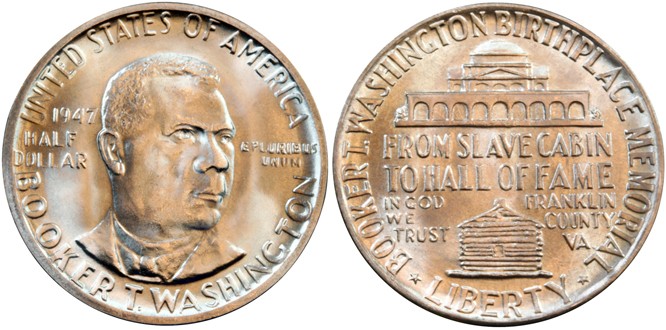
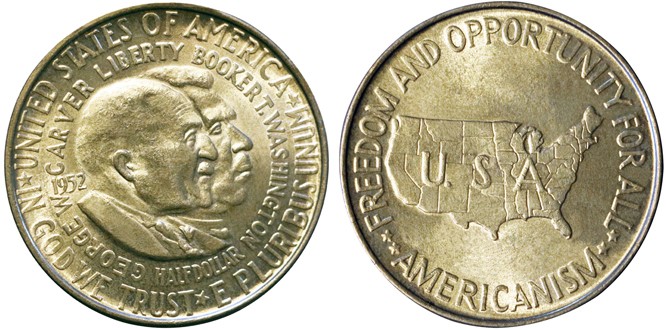
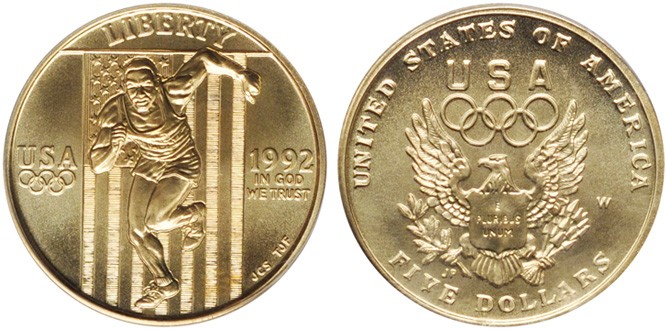
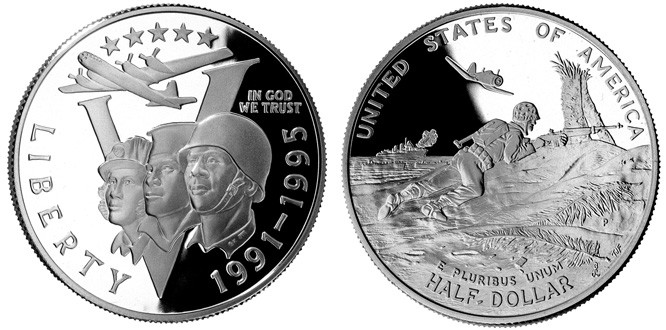
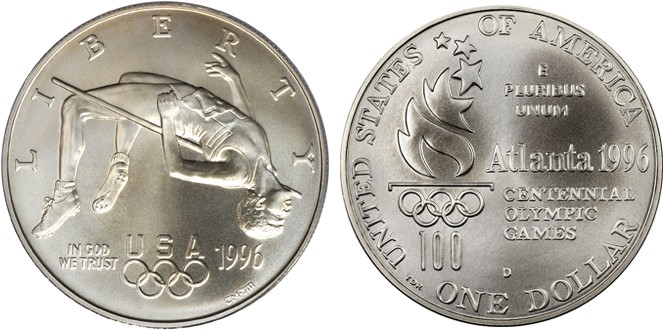
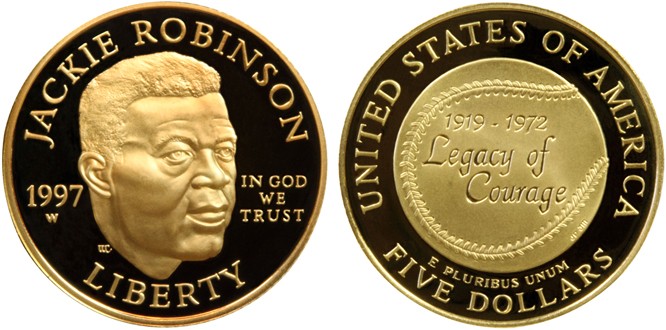
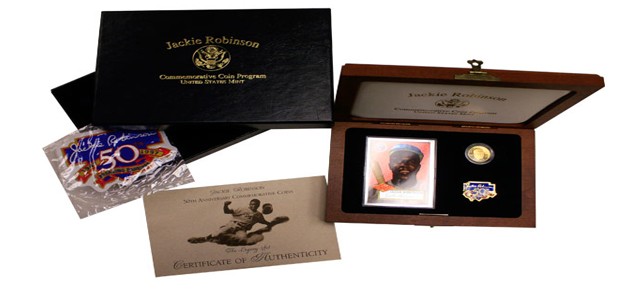
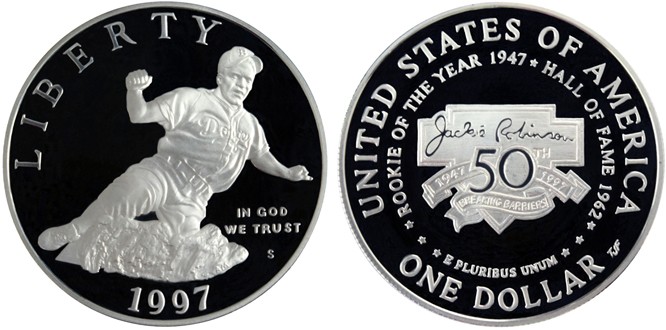

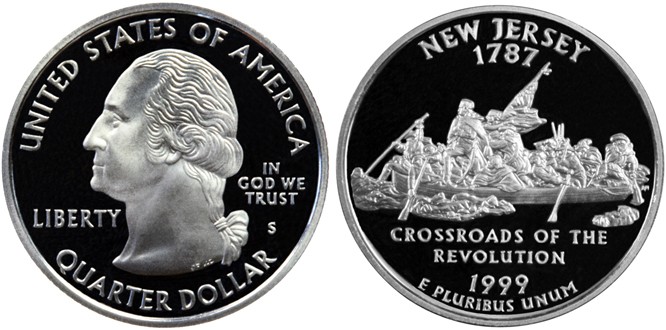

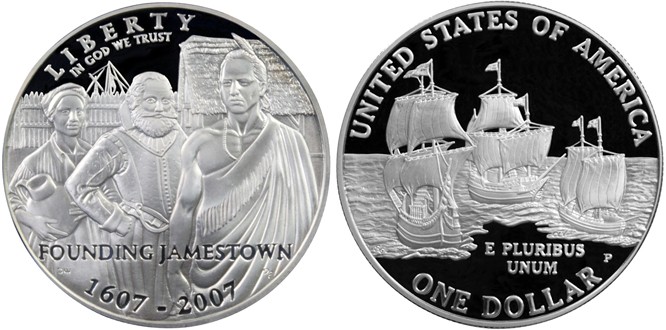
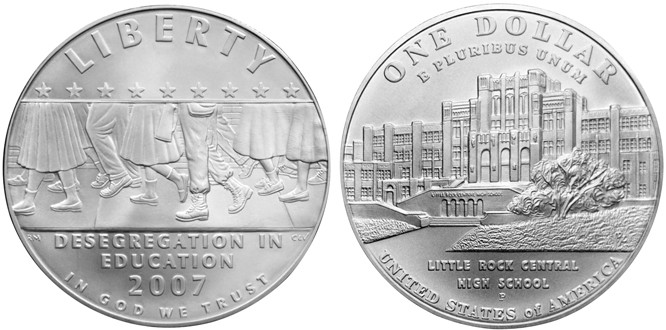
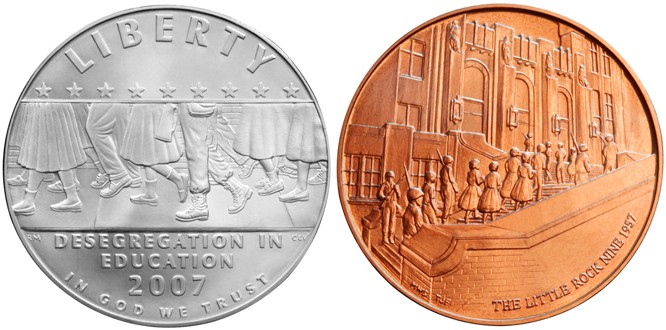
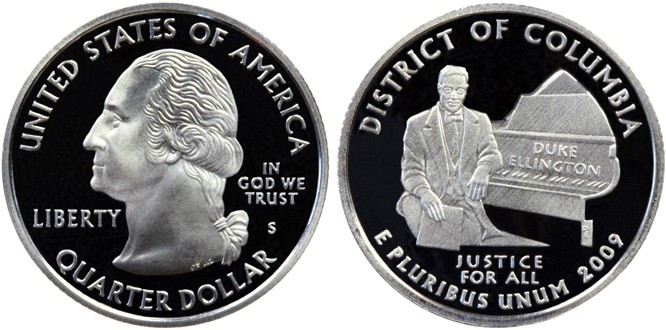
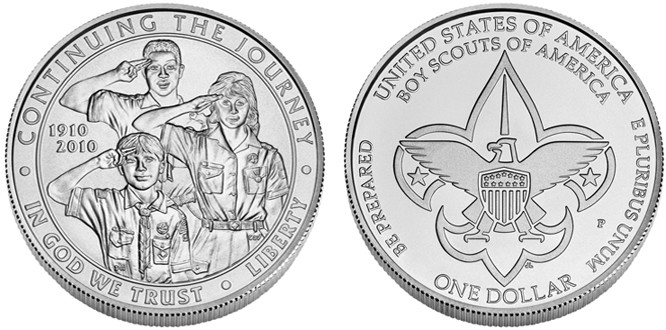
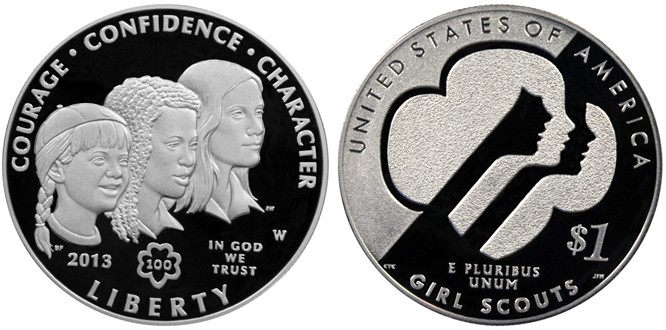
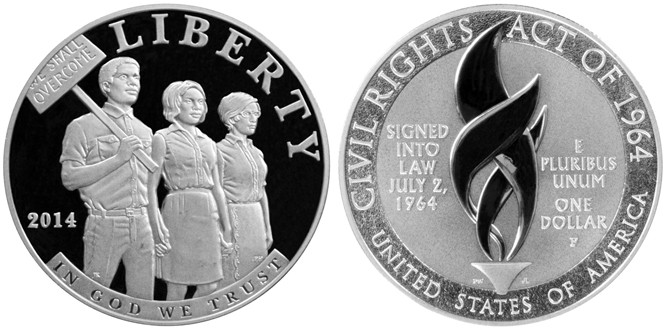
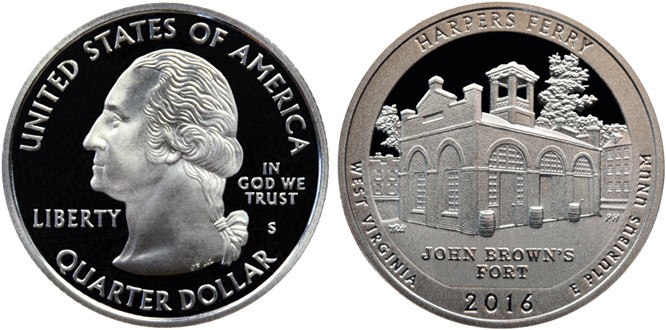

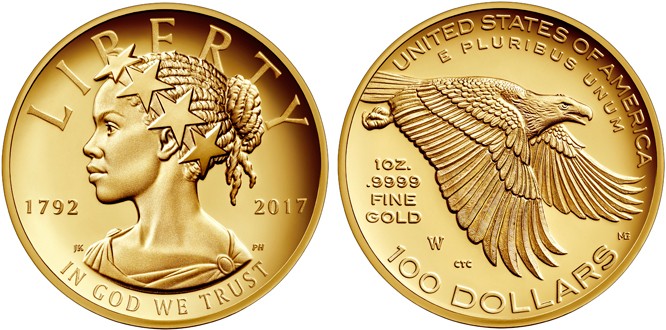
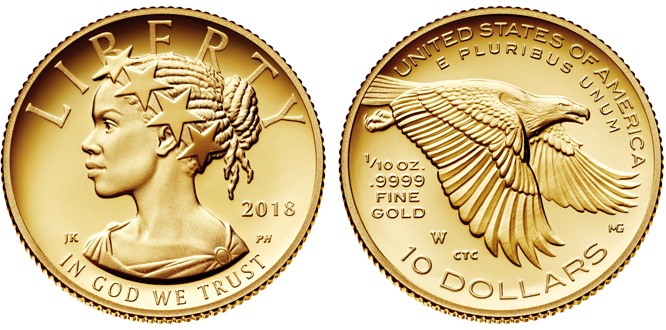

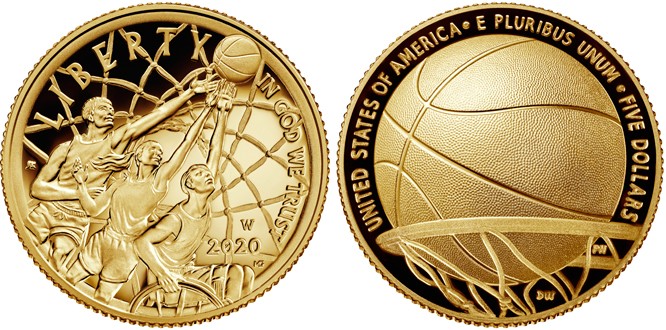



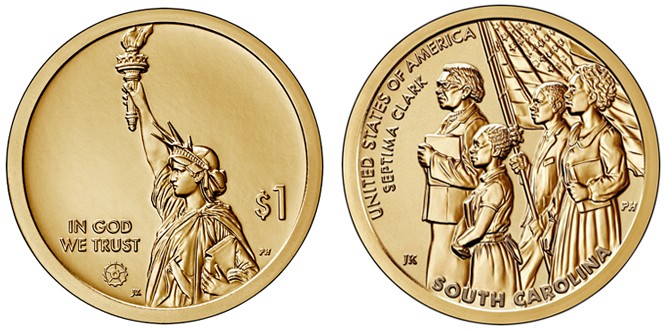


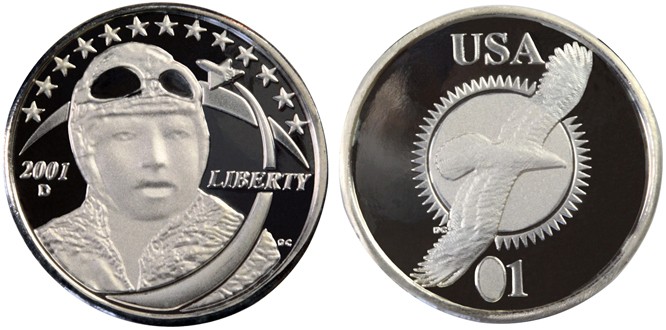


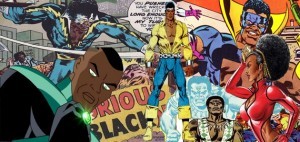

3 Comments
Very interesting, but I dare to say that you should look into carrying the unique, one of a kind, the B.L.A.C.K (Boldly Liberating African American Coin of Knowledge) at ourblackcoin.com
Contact ross@ourblackcoin.com
I was impressed with with your Black coins and metals presentations. I possess 17 of the coins. I am inspired to acquire a few more in the near future.
Thank you for the new information. I was not aware of the number of Blacks on metals.
The Black Coin and Metal collection is fantastic and a great inspiration for me, and I am sure for others. It can be a diffuclt hobby, but the rewards are great! It is understandable many feel the cost of collecting is beyond their means; however, with a quarter one can start. Because, if we do not recognize black achievements and dedicatioins others will, and it will be gone and out of ones’ reach!